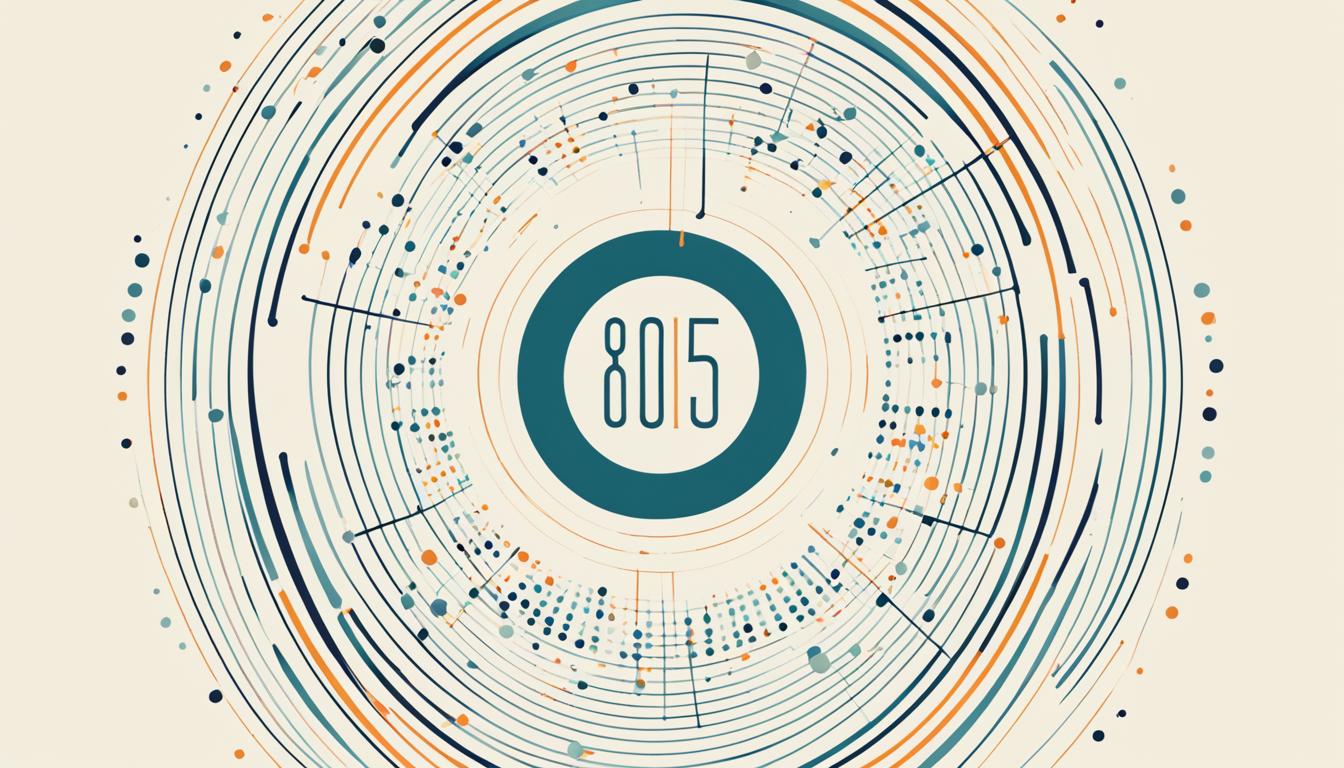The Federal Rules of Bankruptcy Procedure Rule 8015 set detailed rules for how briefs, appendices, and other documents should look. This is to make sure these documents are easy to read and review by the court. It covers how to make a paper copy, what the binding should be like, how many pages are allowed, the typeface to use, and how to file them electronically.
Rule 8015 helps make legal arguments and evidence clear in bankruptcy court. It makes sure all documents look the same and are a certain length, which helps judges focus on the important points. Following Rule 8015 is key for anyone arguing a case on appeal in bankruptcy court.
Requirements for Paper Briefs and Appendices
Reproduction and Cover
According to Rule 8015(a), paper briefs need clear, dark text. This text should be on light, thin paper. It must be easily readable. The cover page should have details like the case number, court name, and contact for lawyers.
Binding, Paper Size, and Formatting
Paper briefs must be bound well but still let the text be seen. They should easily open flat. Each page should be 8.5 by 11 inches. The text should be double-spaced, have one-inch margins, and use a 14-point or larger font.
This makes sure all paper briefs look the same. Plus, they’re simple to read and handle for the court and everyone involved.
“Paper briefs must be securely bound in a manner that does not obscure the text and allows the brief to lie flat when open.”
Courts might have extra rules about how paper briefs are made and shared. Before submitting a brief, attorneys and those involved should check the specific rules.
Length Limitations for Briefs
Rule 8015(a)(7) of the Federal Rules of Bankruptcy Procedure sets limits on briefs. They make sure that briefs are clear, to the point, and easy for the court to understand.
Principal briefs can’t be longer than 30 pages. Reply briefs are even shorter, with a limit of 15 pages. The aim is to get the point across without using too many words.
Or, instead of page counts, you can use a certain amount of words or lines. A main brief can be up to 13,000 words or 1,300 lines. A reply brief can use half that amount. This method allows for more in-depth information if needed.
If a brief goes over these limits, it must include a certificate of compliance. This document verifies that the brief meets the rules on length.
| Brief Type | Page Limit | Word Limit | Line Limit |
|---|---|---|---|
| Principal Brief | 30 pages | 13,000 words | 1,300 lines |
| Reply Brief | 15 pages | 6,500 words | 650 lines |
Sticking to these limits helps make briefs clear and easy to follow. This benefits both the court and the parties involved in the appeal process.

Complying with Rule 8015
Parties filing briefs and other documents in bankruptcy appeals must follow Rule 8015 carefully. This rule covers how documents should look and what they should say. Not following the rule can cause the court to not accept the file or give other penalties. It’s key to pay close attention to the rule’s details for a solid legal argument.
Rule 8015 outlines what’s needed when making briefs and appendices for these appeals:
- The document’s look should match the rule, including the font, spacing, and margins.
- All key parts must be in the brief, like contents, authorities, case issues, arguments, and endings.
- There are specific limits on how long the brief can be, unless the court agrees to more.
If these rules are broken, there can be big problems. The court might not accept the file or choose to fine or end the appeal. To stay clear of these troubles, it’s vital to read and stick to Rule 8015 when writing your documents.
| Statistic | Value |
|---|---|
| Appellant James Riffin filed the Rule 60 Motion 21 days after the entry of the Dismissal Order on July 16, 2012. | 21 days |
| Rule 8015 of the Federal Rules of Bankruptcy Procedure allows for a motion for rehearing to be filed within 14 days after the entry of the judgment. | 14 days |
| Percentage of cases where a timely motion for rehearing was filed under Bankruptcy Rule 8015. | N/A |
| Percentage of appeals where a notice of appeal was filed after the district court or bankruptcy appellate panel announces a judgment, order, or decree but before the disposition of the motion for rehearing. | N/A |
| Average number of days it takes to assemble the record in accordance with Bankruptcy Rule 8006 after filing the notice of appeal. | N/A |
| Percentage of cases where an appellee found it necessary to designate additional parts of the record to be included. | N/A |
| Ratio of cases where a local rule of the court of appeals designated parts of the record for omission due to bulk or weight. | N/A |
| Average time taken from the completion of the record to filing it by the district clerk or bankruptcy appellate panel clerk. | N/A |
| Frequency of parties requesting a certified copy of the docket entries to be sent in place of the redesignated record during the pendency of the appeal. | N/A |
The evidence shows why sticking to Rule 8015’s demands is so important. To succeed in bankruptcy appeals, it’s critical to ensure your documents meet the rule’s criteria on looks, content, and length. This helps avoid trouble with the court.
“Careful attention to the rule’s provisions is essential for effective appellate advocacy.”
Form Requirements for Electronically Filed Documents
Briefs and Appendices
Rule 8015(b) and (d) change how briefs and appendices look for electronic filing. Things like making copies and putting them together by hand aren’t needed for electronic files. But, parties still must follow the rules for how their documents should look. They need to handle the cover pages, text, and length rules the right way.
For briefs and appendices put online, how long they can be is the same as for paper. If you type your brief, it shouldn’t go over 5,200 words. If it’s written by hand, keep it under 20 pages. For replies, the word limit is 2,600 if you type them, or 10 pages if not.
How you format electronic files is almost the same as for paper. Make sure to use the right font, spacing, and set up the cover, table of contents, and more correctly. By doing this, everyone can easily read and use the documents you file online.

To sum up, Rule 8015 sets the same rules for how electronic and paper briefs look. It tells you what to do so your online documents meet the right standards. Follow these rules carefully to do it right.
Exclusions from Length Limits and Other Provisions
Rule 8015(g) of the Federal Rules of Bankruptcy Procedure outlines what doesn’t count towards brief length limits. This rule helps include important details without worrying about the brief being too long.
The excluded items from the length limits are:
- The cover page
- The table of contents
- The table of authorities
- The statement regarding oral argument
- Any addenda
- Certificates of counsel
- Proof of service
These exclusions make sure that legal parties can give the court a full brief. They don’t have to worry about going over the limit. Important sections like the table of contents and authorities are allowed, helping the court understand the case better.
Also, the rule lets parties include important parts like addenda, counsel certificates, and proof of service. But, these items won’t add to the overall length of the brief. This keeps the brief clear and easy to follow for the court.
By not counting some parts towards the total length, Rule 8015(g) strikes a good balance. It sets rules for brief lengths but also allows for full and organized legal arguments.
“These exclusions allow parties to include necessary information without it counting towards the overall length of the brief.”
Local Variation
Rule 8015(f) says that local courts and panels can accept some documents that don’t fully follow all the rules. This is for when a local area needs special rules. It gives a bit of room for changes.
Rule 8015 aims to make sure everyone follows the same standards with their documents. But, Rule 8015(f) lets each area make small changes. This way, they can match the rules to their own way of doing things. It keeps the bankruptcy process on track in different places.
By using this flexible approach, courts can handle their specific situations better. Things like how busy they are, the usual practices of the area, and the needs of certain bankruptcy cases come into play. This approach finds a good way to keep the process fair and effective for all sides.

